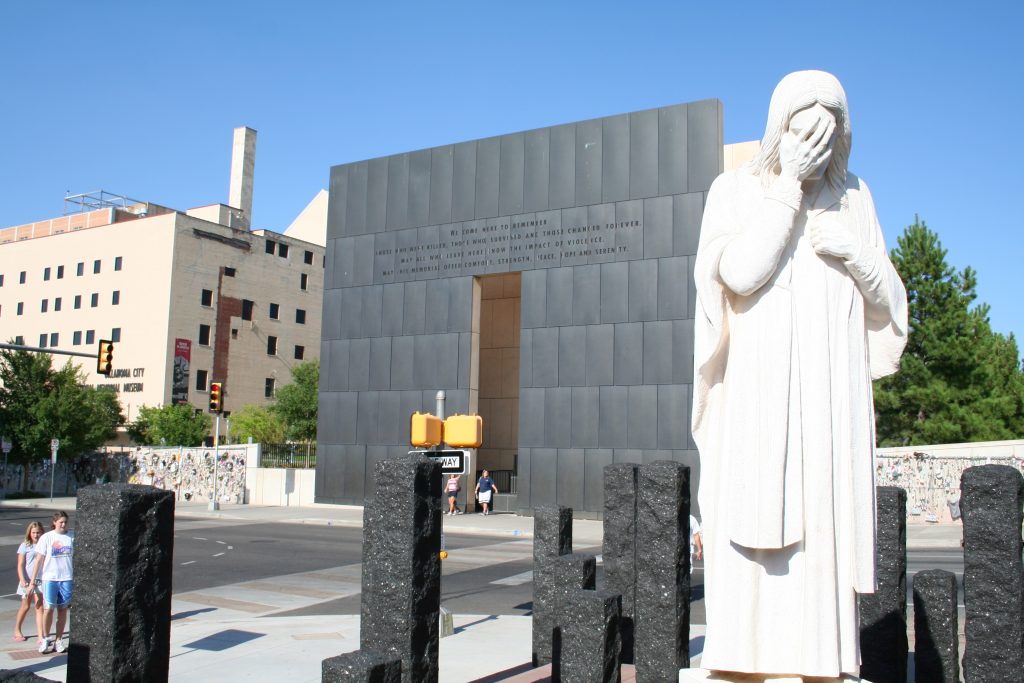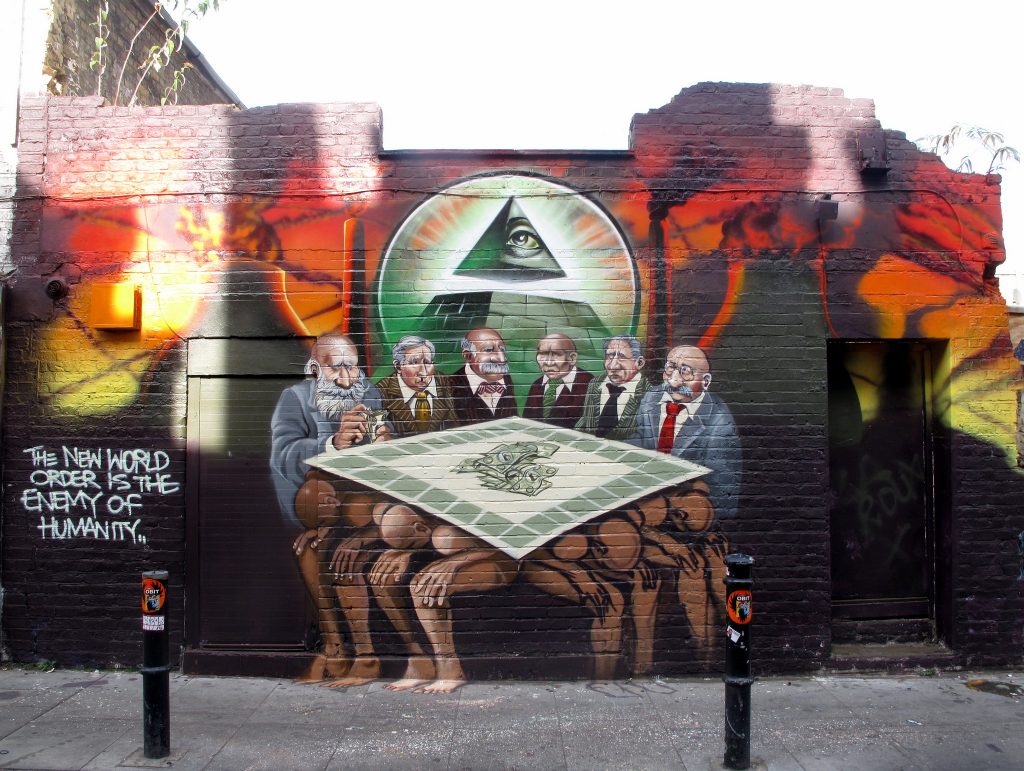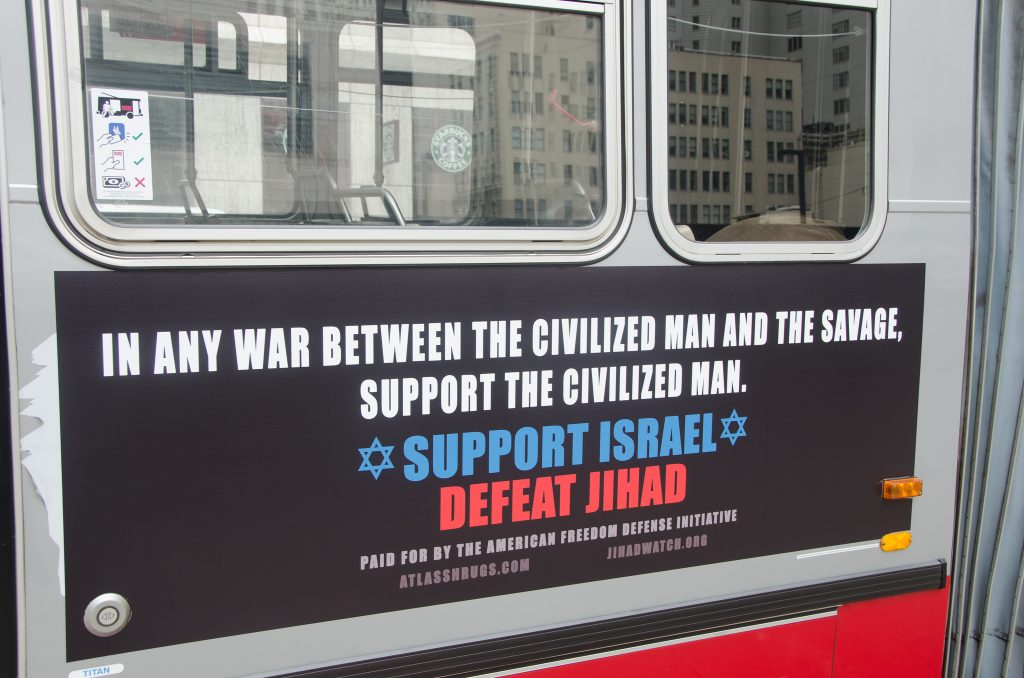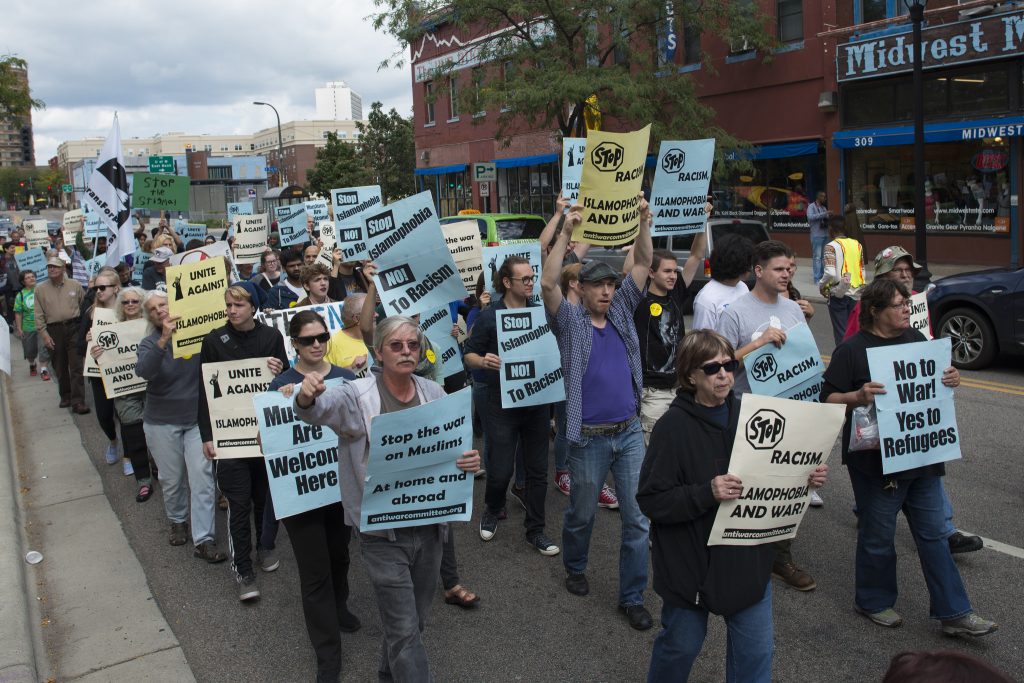This article was written by Alejandro Beutel and Daryl Johnson, and features research from Mimi Yu and Asma Shah.
In 2016, anti-Muslim bias appears to have been the motive behind many attacks and high-profile threats against Muslims and those perceived to be Muslim. These threats and attacks range from hate crimes against individuals in the street to more complex terrorism plots against houses of worship and entire communities.
In 2015, the Federal Bureau of Investigation issued an intelligence bulletin, noting that violent U.S. far-right actors, specifically militia groups, are “expand[ing] their target sets to include Muslims.” In October 2016, the FBI arrested an armed militia group in Kansas calling themselves “Crusaders,” who sought to commit a terrorist bombing against an apartment complex home to hundreds of Somali-Muslim immigrants. A few days ago in Quebec City, Canada, an individual with a purported history of anti-immigrant, anti-Muslim and far-right views, is accused of committing a mass shooting act of terrorism against a local mosque, killing six and wounding 19.
As subject-matter experts on domestic violent extremism who hail from intelligence analysis (Johnson) and academic (Beutel) backgrounds, we hope to shed light on a few questions: What is the “far right”? Who are the militias? What do they believe? Why are Muslims increasingly becoming their targets? And what can be done?
What is the “far right”? Who are the militias?
While people have debated on how to define the U.S. “far right,” generally speaking, experts divide these actors into four major categories: 1) White supremacists, 2) militia extremists, 3) so-called Sovereign Citizens, and 4) anti-abortion extremists. The boundaries between these types are often permeable and individuals have been known to be active across multiple movements. This is largely due these movements’ similar origins, something that we will discuss shortly.
Militias are loosely joined paramilitary groups consisting of people who share anti-government views. As a movement, militias are decentralized with no single defining leader or organization. Estimates on the numbers are hard to produce due to a lack of consistent scholarly research on the movement and fluctuating membership and involvement in militia groups. However, according to militia forums and websites, we assess that they are operating in practically every state in the country.
Militias undoubtedly continue to have racist elements within their broader movement and often contain strong racial undertones in their narratives
Today’s U.S. militia movement is one of the latest forms of various right-wing paramilitary movements that arose in the United States during the early and mid-20th century. However subject-matter experts agree that today’s militia movement is the direct descendant of a violent far-right, anti-government movement known as Posse Comitatus, or simply “the Posse.” (It’s also worthwhile to note that another far-right movement, known as Sovereign Citizens, also has its origins in Posse beliefs.)
Active in the 1970s and 1980s, the Posse made inroads with Midwest farming communities that, suffering from a massive financial crisis, blamed their woes on the federal government. Posse members espoused an ideology that the U.S. federal government was an illegitimate body, controlled by various interests — bankers, Jews, socialists and others — who acquired power through unlawful and conspiratorial means. The only legal form of government, according to their beliefs, was a decentralized system where only county sheriffs would be the highest legitimate elected government officials. Founded by members of an extremely racist religious sect known as Christian Identity, Posse Comitatus followers also espoused a mix of beliefs rooted in White supremacy and their understanding of natural law. (Many Christian Identity members also later became involved in violent anti-abortion extremism.)
While the Posse declined by the late ’80s, many of its violent anti-government ideas continued to live on and were revived in the form of the militia movement in the early ’90s. Two high-profile incidents set that process in motion. The first was an 11-day standoff in Ruby Ridge, Idaho between Randy Weaver and his family, and federal law enforcement agencies that ended in the death of his son, wife and a federal agent. Weaver became a hero to members of the violent far right and his wife and son were regarded as martyrs. Approximately six months later, in late February 1993, federal agents faced another high-profile standoff in Waco, Texas with a fringe sect known as the Branch Davidians. The standoff came to a deadline conclusion on April 19, 1993, with more than 80 people killed, including four federal agents.
In October 1992, far-right activist and founder of the Militia of Montana John Trochmann introduced the idea of creating “private citizen armies” to defend local communities in the immediate aftermath of the Ruby Ridge incident at a gathering of far-right extremists in Estes Park, Colorado.
When the bloody siege in Waco, Texas happened only a few months later, it lent further credence to Trochmann’s proposal. Many would-be militia members and their ideological fellow travelers saw Ruby Ridge and Waco as proof of an over-reaching, zealous, tyrannical government. One of these individuals was Oklahoma City bomber Timothy McVeigh. While McVeigh was not a formal member of a militia group, he did hold anti-government views consistent with the most violent elements of the militia movement. Perpetrating the Oklahoma City attack on April 19, 1995, exactly two years after the Waco siege ended, McVeigh cited the Ruby Ridge and Waco sieges as motives for the bombing.

The Oklahoma City Bombing Memorial >Flickr/BKL
Scholar-advocates such as Mark Potok at the Southern Poverty Law Center point to two “waves” of militia activity. The first wave was from 1993 until 1998. This wave ended due to a combination of law enforcement scrutiny, public backlash, the election of a politically conservative president and the failure of “Y2K” apocalyptic predictions from coming to fruition. The second wave — fueled by a combination of enduring far-right conspiracy theories, economic frustration caused by the Great Recession, the election of America’s first Black president, and changing racial/ethnic demographics — began in 2009 and continues to this day.
It is important to note that not all militias are alike. Most militia groups are engaged in the lawful exercise of the right to peaceful assembly and the right to bear arms under the U.S. Constitution. However there are some groups and individuals within the larger movement who, beyond paramilitary exercises and expression of anti-government views, suggest unlawful intent such as advocating offensive violence (rather than self-defense) against perceived enemies, testing explosives, conducting surveillance of potential targets and conspiring to engage in homicidal violence, including terrorism.
They believe that if voting does not produced the desired results, then the protection of liberties may involve the use of violence in the form of non-government, citizen-formed militias
Militias are also often thought to be exclusively Christian. While Christianity remains the dominant religion for most groups, it is not the only form of religious expression. Jews and Muslims have also had visible participation in militia groups. Jon Ritzheimer, a militiaman who has a strong track record of anti-Muslim bigotry, is an avowed atheist.
They are also often automatically assumed to be racist, synonymous with other White Supremacist movements like the KKK and Neo-Nazism. While militias have undoubtedly overlapped with White supremacists in the past, including its origins from the earlier Christian Identity-influenced Posse Comitatus movement, most militias are not inherently racist, per se. Some militia groups claim African-American, Latino and other minority members. However, militias’ historical origins are hard to overlook. Moreover militias undoubtedly continue to have racist elements within their broader movement and often contain strong racial undertones in their narratives, something we’ll discuss shortly. More recently, it appears that many militia extremists are, once again, turning to hate as they set their sights on targeting American Muslims.
Militia Movements’ Key Beliefs and Narratives
The modern U.S. militia movement maintains several common beliefs. The ideological core of the movement is to prevent what it sees as the infringement of individual civil liberties by the U.S. federal government. Militias typically emphasize that common forms of civic and political engagement, such as lobbying and voting, are the primary tools to protect these rights. However if they fail at the ballot, then the bullet is the next best option. In other words, they believe that, if voting does not produced the desired results, then the protection of liberties may involve the use of violence in the form of non-government, citizen-formed militias. Hence, militias put a heavy emphasis on preserving a maximalist interpretation of the right to bear arms. Preservation of the Second Amendment is necessary to ensuring preservation of the First Amendment.
Many militia supporters often frame their views and actions using imagery and motifs associated with the American Revolution. It is common to see movement supporters using terms such as “Patriot,” “Minutemen,” “Militia,” and “Three-Percenters,” the latter being a reference to the (contested) belief about the proportion of colonists who fought against the British during the War of Independence.
These beliefs are further articulated in the form of several conspiracy narratives, which ideologically distinguish militia members from regular gun owners and political conservatives. They are:
- Socialist police state takeover. This narrative suggests that a group of individuals perceived to be politically progressive, including elected presidents, are involved in an unlawful conspiracy to undermine Americans’ liberties and create a dictatorship. To do so, this conspiracy seeks to manufacture and exploit crises to increase its power. Meanwhile the American people, deceived by the media, are lulled into complacency. Under this narrative, there are two related conspiracies. First, efforts to slowly ban all firearms — the ultimate means by which Americans can secure their liberties — will be completed. The president will enact a total ban on firearms and use the military to confiscate the guns of law-abiding American citizens. Second, after guns are confiscated, the Federal Emergency Management Agency, or FEMA, will place American citizens in concentration camps during a national emergency. The basis for this conspiracy emanates from FEMA’s perceived sweeping “emergency powers” to institute “martial law” during a crisis.
- New World Order (NWO). A more expansive version of the “socialist police state takeover” narrative involves international actors. They include a shadowy cabal that often consists of Marxists, the Bilderberg Group, the Council on Foreign Relations, the Trilateral Commission, the United Nations, the Illuminati, and unnamed “international bankers” (often understood as a code word for Jews) who are involved in a global conspiracy designed to implement worldwide totalitarianism. Like its domestic counterpart, this narrative is similar to the anti-Semitic trope of a “Zionist Occupied Government” embraced by many White supremacists. Some Christian fundamentalists within the militia movement claim this conspiracy is the fulfillment of end-times prophecies.

An anti-Semitic New World Order mural in London, England >Flickr/duncan c
- Illegal invasion. This is a narrative that is specific to those militia groups that prioritize anti-immigration issues as their central organizing principle, such as the Minutemen border patrol militia movement. It describes an unconstrained movement of undocumented immigrants, mostly coming from Mexico and Latin America, and undermining American social order and ultimately its sovereignty by bringing in drugs, disease and crime, and stealing jobs from native-born Americans.
- When The Shit Hits The Fan (WTSHTF). WTSHTF is a phrase used to express a narrative by militia extremists — particularly those focused on survivalism and “doomsday preparation” — describing some future cataclysmic, possibly apocalyptic event that would likely cause the collapse of society and civil order. Often this narrative has strong racial undertones — these mass-disaster events include roving gangs from inner-cities (that happen to be mostly African-American and Latino) who will come heavily armed, looking for food, water and shelter (that will happen to be possessed mostly by White Christians in rural and suburban America). Because of these racial undertones, this narrative parallels apocalyptic versions of a “race war/racial holy war” narrative espoused by White supremacists, but without the language of overt racial bigotry. Religious fundamentalist variants on this narrative suggest that these events are the beginning stages of the apocalypse.
- White Genocide. While this narrative is more associated with White supremacy rather than the militia movement, per se, as we noted earlier, in the U.S., there has been a historical overlap between White supremacist and militia movements. Moreover, many militia groups continue to have racists in their ranks whose views often go uncontested because to do so “would be to give into political correctness.” This narrative claims that Caucasians are slowly being killed off due to a combination of shifting social and political norms that encourage race-mixing and intermarriage, open immigration policies allowing non-Whites from less developed nations to enter and settle into the United States and Europe, and shifting demographics toward more racially and ethnically diverse societies. A softer version of this narrative is articulated as a “cultural genocide” that expresses anxiety over a perceived increasing social stigma of being White due to increased public empowerment of racial and religious minority identity politics.
Inclusion of Anti-Muslim Views into Violent Militia Narratives
Muslims were not always a central fixture of fear and anger within militia narratives. The explicit and implicit targets of many militias’ racial anxieties were typically Jews, Blacks and Latinos. Two factors appear to have facilitated militias’ increasing fixation and hostility toward Muslims.
First were the enduring and rising post-9/11 associations made between all Muslims and the violent extremist fringe of individuals claiming to act in the name of their faith. Second, were a group of political and financial profiteers, dubbed the “Islamophobia network” by critics, who effectively exploited and amplified public fear of Islam and Muslims.
Communities of all backgrounds cannot be content with countering only the violent manifestations of hate and extremism
The result has been “new wine poured into old bottles” — a Muslim fear variant on older militia narratives that were otherwise previously directed at Jews, Blacks, Latinos, liberals and others who reject the hate and the unlawful violence that often accompanies them.
Some examples of Muslim fear variants on common militia conspiracy narratives include:
- (Muslim) Socialist police state. President Barack Obama and others are not only accused of being socialists determined to take away Americans’ firearms so they can put them in FEMA death camps, but they also happen to be Muslims and terrorist sympathizers seeking to enact Taliban-style sharia law in the United States.
- (Muslim) New World Order. According to one anti-Muslim conspiracy theorist, the United Nations is being manipulated by the Organization of Islamic Cooperation (itself a UN-type of organization for Muslim countries), to create a “global police force” that will override “the United States Constitution, in favor of United Nations laws that would henceforth be implemented in the United States itself — without any consultation of Congress at all.” (Not surprisingly, this conspiracy claim was repeated verbatim on a militia website.)
- (Muslim) “Illegal Invasion.” Members of anti-immigrant-focused militias stoke up fears that within the migration flow of undocumented immigrants entering America, al Qaida and ISIS terrorists might be crossing into the United States through its border with Mexico, potentially in collusion with drug cartels.

Anti-Islam ads on California public transit >Flickr/Steve Rhodes
- (Muslim) When The Shit Hits The Fan. One example is the rhetoric espoused by anti-Muslim militia groups like the Texas-based Bureau on American Islamic Relations (whose members are part of the Three-Percenter militia movement). One of its members was filmed during a media interview saying that he and his cohorts were engaged in paramilitary training to prepare for a “Muslim uprising.”
- (Muslim) White Genocide. The Muslim variant of the narrative was first popularized in Europe with fears of “Eurabia” and the “Islamization of Europe,” being touted by far-right politicians who claim that Europe will be a Muslim-majority continent within a few decades due to migrant flows and low White European birthrates. That narrative has been increasingly exported to the United States and adopted by far-right actors, including militia extremists. Thus it is not surprising that some militia extremists have adopted this narrative, increasingly engaged in armed protests outside of mosques in reaction to concerns of incoming Syrian refugees, and say things like “Don’t fuck with White people!” in response to fears about a purported “Islamization of America.”
Fighting Back Against Hate and Violence
One obvious implication of these findings is for Muslim community centers and houses of worship to implement safety protocols that other faith communities, particularly American Jews, have adopted. Groups like the Council on American-Islamic Relations and the Muslim Public Affairs Council have offered some practical guidance.
Understanding militia groups in their variances, and where anti-Muslim biases are playing an increasing role among many of them, is another necessary step toward creating safer communities for Muslims and all Americans. The shield and sword of the American republic starts with an informed citizenry.
The silver lining to this public safety challenge facing American Muslims is that it has widened a moral opportunity to partner with other racial and faith communities, such as African Americans and Jewish Americans. Recent armed protests by White supremacists against the Houston chapter of the NAACP and the Jewish community in Whitefish, Montana, clearly demonstrate that Muslims are not the only targets of far-right hate and threats.
Ultimately, communities of all backgrounds cannot be content with countering only the violent manifestations of hate and extremism. An effective effort to counter militia violent extremism, or whatever one chooses to call it, must involve a grassroots, civil society-led movement to marginalize the appeal and credibility of these types of narratives that fuel hatred and violence.

Protest against Islamophia in Minneapolis >Flickr/Fibonacci Blue
Thankfully for those seeking to fight back against these hateful narratives, effective strategies and model campaigns exist for communities and grassroots advocates to use. Even if one does not necessarily use or agree with all of the detailed prescriptions offered, we would all be wise to at least follow this piece of advice from experienced civil rights advocate Ken Toole, “The goal should be to inform the public and to call into the question the premises that underlie extremist movements — in the process, initiating meaningful community discussion of pluralism, tolerance, and the values necessary to the conduct of public business in a free society.”
Nothing less than the future of our communities and our nation is at stake.
Alejandro Beutel is a researcher for Countering Violent Extremism at the University of Maryland’s National Consortium for the Study of Terrorism and Responses to Terrorism (START) and Co-Investigator of its Narratives/Counter-Narratives Library project. He is also a fellow at the Institute for Social Policy and Understanding. Views expressed here are solely those of the author and not necessarily the views of START and ISPU.
Daryl Johnson is the owner of DT Analytics, a private consulting firm for law enforcement. Johnson is the former lead analyst for domestic terrorism at the U.S. Department of Homeland Security. Johnson has over 25 years of experience working as a counter-terrorism analyst for the U.S. government. He is the author of ‘Rightwing Resurgence: How A Domestic Terrorist Threat Is Being Ignored’ (Rowman & Littlefield, 2012).”
Asma Shah and Mimi Yu are research interns at START contributing to the Narratives/Counter-Narratives Library project.
*Image: A neo-Nazi rally in Phoenix. Flickr/John Kittelsrud
 This piece appears in our Winter 2016/2017 print issue.
This piece appears in our Winter 2016/2017 print issue.





